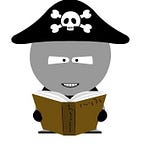Too Gay? Disney’s New Live-Action “Beauty & the Beast”
But film versions of the tale have always addressed gay issues
Bill Condon, the Director of the terrific new live-action version of Disney’s “Beauty and Beast,” has made it clear in media interviews that he is tired of talking about the film’s “gay moment.” But to a degree, he has himself to blame. Condon, who is openly gay, mentioned in an interview in the British magazine Attitude that there is “a nice, exclusively gay moment” in the movie. A brouhaha predictably ensued.
In the space of a few days, an Alabama drive-in chain declared that it could not show a film that threatened family values. The conservative American Family Association collected 50,000 online signatures in support of a boycott of the movie. The government of Malaysia insisted on deletions before the film is shown in that country. And Russia, BBC reports say, will restrict the audience to those over sixteen.
Condon and cast members have complained that this controversy is hugely overblown. And so it seems. Here are the circumstances.
If you remember Disney’s 1991 animated classic, you will recall the obnoxious hunk named Gaston who pesters Belle and threatens the Beast. Less easily remembered is his laughable sidekick, a minor character named LeFou. In the new live-action version, LeFou (played by Josh Gad) has a “man crush” on the burly Gaston (Luke Evans) that could just as easily be described as a one-sided “bromance.”
Now here comes the controversial “gay moment” (spoiler alert). In a swirl of dancing near the end of the film, as folks are constantly changing partners, LeFou ends up for a moment with a male partner and both seem especially delighted by this happenstance. That moment only lasts a second. But upon this blink-of-an-eye moment has arisen a great edifice of outrage and homophobia.
“Can I just say, I’m sort of sick of this,” Condon reasonably responded after the magazine Vulture asked yet another question about the film’s “gay moment.” “If you’ve seen the movie — it’s such a teeny thing.”
Even so, in his own defense, Condon might have gone further. He might have said film versions of “Beauty and the Beast” have always addressed gay issues.
Take Disney’s original animated classic. The real genius behind that version of “Beauty and the Beast” was Howard Ashman, who reworked Linda Woolverton’s script and wrote the musical’s award-winning songs. Ashman died of AIDS in March 1991, just weeks before Disney’s “Beauty and the Beast” was released.
Seen correctly, the Disney film and Ashman’s lyrics amount to a gay plea for openmindedness. Bill Lausch, Ashman’s partner, indicated as much by noting a special link between hostility towards the Beast in the film and hostility towards homosexuals. In an interview in The Advocate after Ashman’s death, Lausch explained: “Gay people will always identify with someone who’s on the outside, who is feared and misunderstood. . . . We respond to being perceived as ugly, as a monster. People are afraid of what they don’t understand–that’s actually in the lyrics of one of the songs.”
Lausch is referring to the scene where a mob with burning torches attacks the Beast’s castle because the Beast is “different”; the mob sings, “We don’t like / What we don’t understand. / In fact, it scares us.” As Lausch’s comments suggest, that scene can viewed as an allegorized version of frenzied gay-bashing, as Gaston encourages the mob’s homophobia and leads them on to violence. Recall that this was the era of AIDS panic when homosexuals were being demonized and attacked by mobs lead by demagogues championing “Family Values.”
In truth, Family Values zealots have more to complain about an even earlier film: Jean Cocteau’s 1946 black-and-white classic “La Belle et la Bête.” Cocteau was openly homosexual and featured his lover Jean Marias in the film’s starring roles; and the movie signals his distaste for heterosexuality. Cocteau’s “Beauty and the Beast” is a horror film that recalls “The Bride of Frankenstein,” and the scenes of horror surround the boudoir when Belle is present. Male heterosexual desire–which we commonly call by the animal-like term of “horniness” — is condemned as disgusting and “beastly.”
So, Condon, the Director of this new incarnation of the “tale as old as time,” needn’t be so timid in his defense of his film’s tiny “gay moment.” His cinematic predecessors have taken up these same issues in even more robust ways. It comes with the territory.
I discuss film versions more comprehensively in my book:
Related essays include:
If you liked this, “clap” below so others will see this on Medium. To see the ten most popular entries on this blog, click here. And if you’d like to read more essays like this, click the “follow” button at the top of this page.
witter: twitter.com/Jerry_Griswold
Facebook: www.facebook.com/griswold.jerry
Amazon: https://amzn.to/2lY9aBP
